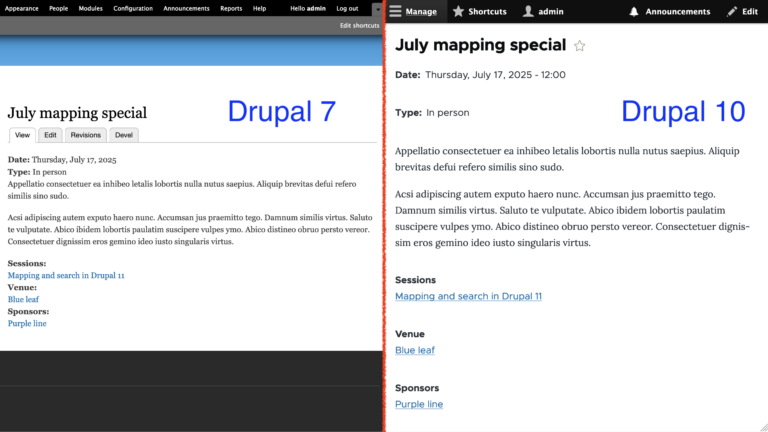
In time, cloud security will become more advanced and tip the scales in favor of an all-cloud scenario. Until then, companies will mainly stick with their hybrid approaches even though it means managing information and data in both cloud and on-prem environments.
A major risk of multi-cloud strategies comes in the form of shadow IT. Shadow IT occurs when other departments or employees take part in IT-related activities without the IT or security group’s awareness. This includes purchasing hardware, software, or cloud services without the IT team’s knowledge or approval. Shadow IT poses a significant security risk since IT teams don’t have knowledge of everything going on in the system, exposing the organization to bad actors or compliance issues. Ransomware and phishing continue to target vulnerabilities in multi-cloud environments, making governance and AI-based monitoring essential for risk mitigation.
Hybrid cloud adoption continues across industries
With all the discussion about how AI tools will negatively impact our world, I believe AI holds promising potential to dramatically improve how we live and work for the better. AI can be an impactful resource to streamline mundane tasks and free up human workers to spend more time on higher-level projects, and that potential isn’t soon to be ignored.
By Gary Bernstein
The cloud industry has exploded with new, innovative solutions that power modern business. As the landscape has become more competitive, companies are changing their approach to building their IT stack. Even major players like Google and Microsoft are competing heavily to attract and retain customers. Companies have no problem switching providers as long as they can meet their needs and get the most for their money. In other words, as vendor pricing fluctuates, organizations are putting aside their loyalty in favor of reducing overall costs.
Businesses are seeing operational gains through AI
Managing IT costs is another consideration that becomes more challenging with multi-cloud environments. For example, a company could be paying for licenses they don’t know about or extra applications that are being used by different teams. In addition, multi-cloud approaches can lead to app sprawl which causes data silos and other inefficiencies over time—costing the company productive working hours.
AI-driven tools will also become a go-to option for managing and interpreting vast amounts of data—a task that could easily get mishandled without a robust tech resource. Similarly, AI is expected to become a major driver of automating simple but necessary business actions such as notifying customers of overdue payments. AI is poised to become more deeply integrated into IT systems and processes in the new year and businesses that want to get ahead will learn how to leverage its capabilities to the fullest.
AI has already proven itself a valuable asset in the business world. We’ve already seen how AI-powered solutions can improve customer support services by automating online chat and allowing customers to get help with common questions and tasks. By expanding their service options to include AI tools, companies have reduced demand for support via email and phone which, in turn, saved costs and enabled greater customer satisfaction. Additionally, AI-driven security monitoring has become a key tool, with organizations mitigating more phishing, ransomware, and DDoS threats while managing multi-cloud environments.
Cloud adoption during the pandemic spiked significantly, with the vast majority of companies accelerating their cloud adoption. Next year, we can expect to see migrations continue steadily as organizations seek to make the most of the cloud’s scalability, cost-effectiveness, flexibility, and security. Many on-prem solutions are also losing support, driving additional cloud migrations.
Vendor rivalry is influencing migration trends
This trend is driving more organizations to seek migration tools to assist with transitioning information from one environment to another. As the cloud solution marketplace becomes more competitive, there will be an increased demand for migration solutions that can move data seamlessly and securely. IT leaders should keep an eye on the cloud market to take advantage of potential long-term savings opportunities. They may also want to start building a migration plan so they can ease the transition should they decide to go with a different cloud vendor. AI-enabled migration planning tools are expected to help organizations reduce downtime and maintain security compliance during these transitions.
The cloud market is ever-evolving, bringing it new opportunities and challenges for businesses in 2026. IT leaders should be mindful of these trends as they look to support their customers in the year ahead. Companies that combine AI-driven operational efficiency with proactive cloud security strategies will be best positioned to thrive in this evolving landscape.
Growth in multi-cloud strategies continues
While it’s true that many companies are trading a fully on-prem approach in favor of the cloud, companies aren’t ready to go all-in on the cloud just yet. Instead, the hybrid approach will remain a popular middle ground where organizations can make the best of both worlds. The hybrid model allows companies to stay tethered to the robust security of on-prem solutions while making the most of the flexibility that cloud-based resources offer. By 2026, hybrid cloud will remain dominant, supported by AI-driven monitoring tools that help secure and manage these complex environments.
Below are four themes that rise to the top of the list.
Companies are deepening their investment in generative AI (GenAI) solutions, with spending on GenAI software and related hardware expected to reach 3B USD by 2027, according to recent data released by IDC. This suggests that enterprises are taking notice of AI’s applications and investing in new ways to make the most of its capabilities. AI is also increasingly applied to cybersecurity, helping organizations detect phishing attacks and other threats before they escalate (WEF Global Cybersecurity Outlook 2025, Cisco State of AI Security Report 2025).
As multi-cloud approaches become more common, other issues will become more prevalent simultaneously. Though companies with multi-cloud strategies are reaping the benefits of the cloud, they may unknowingly expose themselves to risk, pay for unnecessary or duplicative components, or find it harder to track ROI on their IT investments.
Multi-cloud environments also pose a problem of preventing businesses from aligning their IT with their business goals. IT governance ensures that IT is used to meet business objectives. Following IT governance best practices is essential to business success, yet multi-cloud situations can hinder organizations from achieving an ideal governance scenario. When IT operations aren’t effective or efficient or when it’s hard to assess how cloud investments impact the business, it might be time to revisit the multi-cloud approach and consider how to better align with governance processes.
The rise of the cloud has led many organizations to adopt multi-cloud strategies, where a company purchases cloud services from multiple vendors. For large organizations, the use of multiple cloud vendors is expected to increase from 76 percent to 85 percent. By 2026, multi-cloud adoption is projected to rise even further as companies diversify workloads for cost efficiency and redundancy.
As we look toward 2026, cloud systems are becoming more sophisticated and secure, and advancements in AI and cybersecurity are shaping enterprise strategies. Companies will increasingly focus on optimizing their cloud spending through strategies like cloud Finops and AI integration, ensuring that resources are utilized efficiently. Additionally, as organizations aim for greater operational agility, the emphasis on cloud-native solutions will rise, enabling faster deployment and innovation. This combination of financial optimization and technological advancement will be crucial as businesses navigate the evolving cloud landscape.






